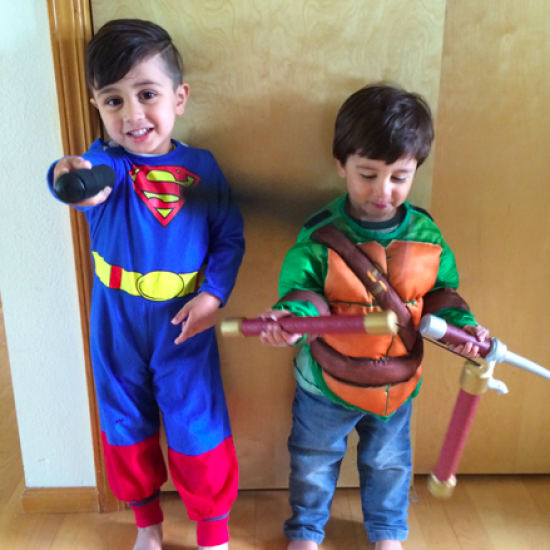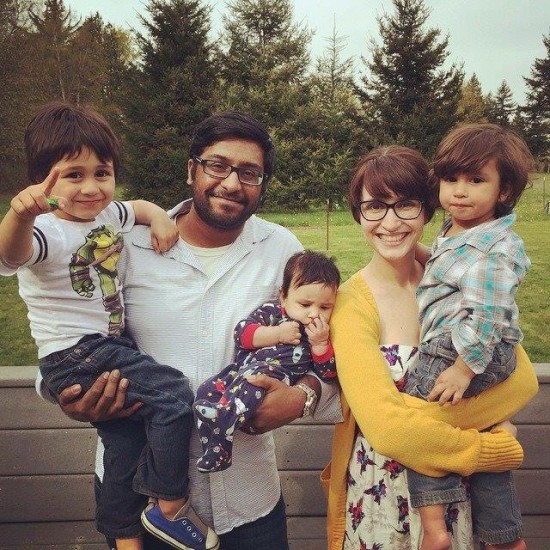In the last six years of my marriage, my husband and I have done what we can to blend two cultures. We have asked loved ones for advice and observed to see how other interracial families did it. We wanted to glean everything we could because blending cultures has always been extremely important to us. We wanted to try and have a lot of it figured out before we had kids.
We had our first child a few days before our second year anniversary. We still had so much to learn about bringing two cultures to one family. We realized we would learn it along the way. We would learn how to blend cultures as our family grew.
We have learned so much since we were married. We’ve learned a lot about traditions, cultural expectations, where to have grace, where to give a little, but we are still pondering one thing in regards to our children. How will our children identify themselves racially?
We now have three biracial children, three little boys who are half Indian and half white. Their racial identity has come up a few times as they’ve begun to ask questions about life. My oldest son asked me why he wasn’t black like daddy or white like mommy. I had to explain to him that he’s both. He’s so special that he has a little bit of mommy and daddy in him. After that, he loved going around to people telling them that he is a little bit of mommy and daddy!
It came up again this year. My husband, kids, and I went to go and see my husband’s side of the family. Every one was excited because we had recently had another little boy. No one had met him yet and they couldn’t wait to get in some baby cuddles. When we got there, our little guy was instantly handed over. Everyone started calling him our little Indian boy. They said that he looked the most Indian out of all of our kids and deemed him the little Indian boy.
I didn’t think anything of it at first. I agreed! Out of all of our kids, he looked the most Indian. He has the sharp little nose, dark skin, and beautiful dark eyes. The more it happened, I started to realize something stood up inside of me when they said that. He isn’t just Indian. He’s white and Indian. He’s both. He’s a beautiful blend of both.
That’s when it hit me. Our children will be faced with a choice. The day will come when our children have to racially identify themselves. What will they say? Will they choose a race to simplify and avoid questions? Will they choose the race they identify with the most? Or will they say they are mixed?
Their response will depend on the way we raise them. If we allow a competition between races to occur, they will be prompted to choose one. If they are embarrassed about being different, they will choose one.
We, as their parents, shape how our children see themselves. We have to raise our children in an environment where the cultures in their lives don’t compete; rather they complement each other. You can’t try to make your culture more important than your spouse’s. We have to show them the beauty of the cultures in their lives.
We do this through hands-on experience. We make food from both cultures, although we try to make more Indian food at home because they are exposed to American food everywhere they go. We dance around in our house to Bollywood and American music. We watch movies from both cultures. Some of our favorites are Bollywood musicals because our kids copy the dance moves! We take our children to different Indian festivals in town. We take our children to art museums to learn about history. We want them to see the beauty of each culture and become passionate about them both.
Each family may have a different preference when it comes to how their children racially identify themselves. In our family, it’s very important that our children embrace both of their cultures. When the time comes and they have to racially identify themselves, we want them to proudly say, “I’m White and Indian.”
You have to talk about this as a family. How do you want your children to racially identify themselves? Do you want them to blend cultures, choose a culture, or something new? Your decision needs to shape the way you teach your children.
Brittany Muddamalle is the mother of three boys under four years old. She has been in an intercultural marriage for six years. Her and her husband are currently raising their children in American and East Indian culture. She is also the writer of The Almost Indian Wife blog. Her hope is to make a change by sharing her experiences with her own intercultural marriage and raising biracial children.
Check out her blog: The Almost Indian Wife Facebook Twitter Google+



